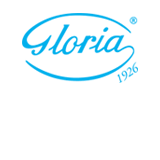Nanobiomaterials for vascular biology and wound management: A review

Submitted: 16 November 2017
Accepted: 29 January 2018
Published: 20 February 2018
Accepted: 29 January 2018
Abstract Views: 8488
PDF: 3548
HTML: 223
HTML: 223
Publisher's note
All claims expressed in this article are solely those of the authors and do not necessarily represent those of their affiliated organizations, or those of the publisher, the editors and the reviewers. Any product that may be evaluated in this article or claim that may be made by its manufacturer is not guaranteed or endorsed by the publisher.
All claims expressed in this article are solely those of the authors and do not necessarily represent those of their affiliated organizations, or those of the publisher, the editors and the reviewers. Any product that may be evaluated in this article or claim that may be made by its manufacturer is not guaranteed or endorsed by the publisher.

 https://doi.org/10.4081/vl.2018.7196
https://doi.org/10.4081/vl.2018.7196






